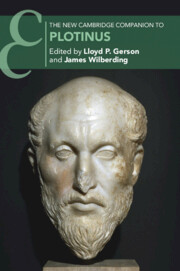Book contents
- The New Cambridge Companion to Plotinus
- Other Volumes in the Series of Cambridge Companions
- The New Cambridge Companion to Plotinus
- Copyright page
- Contents
- Figures
- Tables
- Contributors
- Acknowledgements
- Porphyry’s Arrangement of the Enneads
- Abbreviations of Other Ancient Works and Authors
- Introduction
- Part I Historical Context
- Part II Metaphysics and Epistemology
- Part III Psychology
- 9 The Embodied Soul
- 10 Self-Knowledge and Self-Reflexivity
- Part IV Natural Philosophy
- Part V Ethics
- Bibliography
- Index Locorum
- Index
- Other Volumes in the Series of Cambridge Companions (continued from page ii)
9 - The Embodied Soul
from Part III - Psychology
Published online by Cambridge University Press: 25 May 2022
- The New Cambridge Companion to Plotinus
- Other Volumes in the Series of Cambridge Companions
- The New Cambridge Companion to Plotinus
- Copyright page
- Contents
- Figures
- Tables
- Contributors
- Acknowledgements
- Porphyry’s Arrangement of the Enneads
- Abbreviations of Other Ancient Works and Authors
- Introduction
- Part I Historical Context
- Part II Metaphysics and Epistemology
- Part III Psychology
- 9 The Embodied Soul
- 10 Self-Knowledge and Self-Reflexivity
- Part IV Natural Philosophy
- Part V Ethics
- Bibliography
- Index Locorum
- Index
- Other Volumes in the Series of Cambridge Companions (continued from page ii)
Summary
The Greek word empsukhos (‘ensouled’) was used in ordinary language to describe something as alive.1 Philosophers from all major schools specified this linguistically marked connection between soul and life by postulating or arguing that the soul is the principle of life.2 The soul can be understood to be so in three ways. All life-constituting activities of a living being are activities of the soul, or they are activities of the composite of body and soul, or some are activities of the soul and others of the composite. Plotinus defends the first option.3
- Type
- Chapter
- Information
- The New Cambridge Companion to Plotinus , pp. 219 - 240Publisher: Cambridge University PressPrint publication year: 2022
- 2
- Cited by

